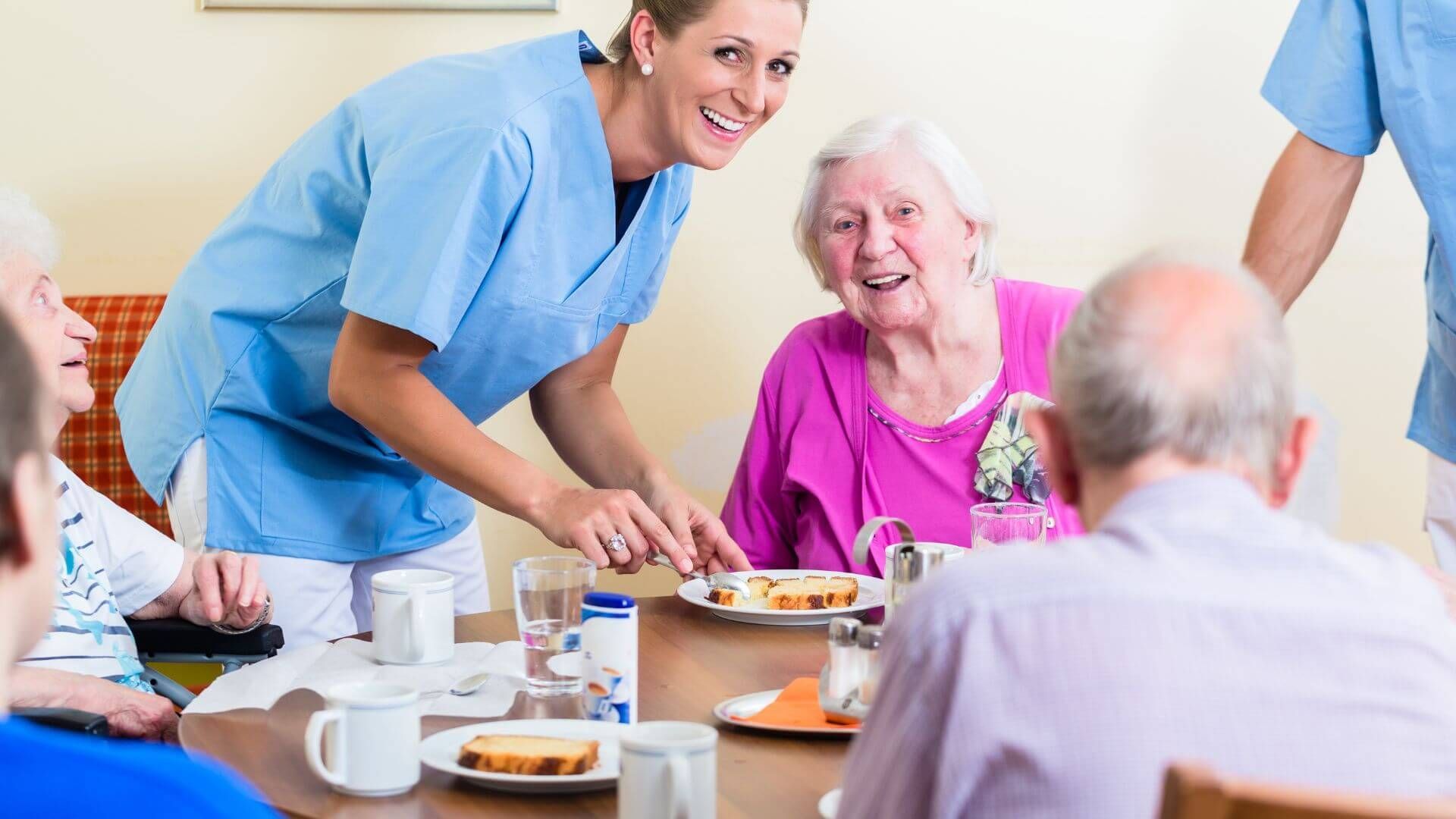Promoting Independence with Personalized Assistance

Assisted living facilities offer a range of personalized care services to support seniors in their daily lives, while also promoting independence and autonomy. With a focus on individual needs, these communities provide a variety of assistance options tailored to each resident's unique requirements. Here are some key aspects of personalized assistance in assisted living communities:
1. Personal Care Services:
Assisted living residents can benefit from a wide array of personal care services, including assistance with bathing, dressing, grooming, and medication management. Trained staff members are available to provide support as needed, ensuring seniors can maintain their personal hygiene and well-being.
2. Medical Care:
Most assisted living facilities have medical services available on-site or in partnership with healthcare providers. These services may include regular health check-ups, medication administration, and coordination of medical appointments. Having access to medical care within the community offers convenience and peace of mind for both residents and their family members.
3. Transportation Services:
Assisted living communities often provide transportation services for residents, ensuring they can easily access medical appointments, shopping centers, social outings, and other community activities. This transportation assistance allows seniors to maintain their independence and engage in various experiences outside the facility.
4. Social Engagement and Activities:
Promoting social connections and overall well-being is a core aspect of assisted living communities. These communities offer a range of activities and programs designed to keep seniors active, engaged, and connected with others. From group outings and educational workshops to fitness classes and hobby clubs, residents have ample opportunities to pursue their interests and build meaningful relationships.
5. Supportive Environment:
Assisted living communities create a supportive environment that fosters independence while ensuring the safety and security of their residents. Trained staff members are available 24/7 to provide assistance and respond to any emergencies. This sense of security allows seniors to live with peace of mind, knowing that help is readily available when needed.
Assisted living communities offer a bridge between independent living and skilled nursing care, providing a range of personalized services to support seniors in their daily lives. With a focus on individual needs and preferences, these communities strive to enhance independence, promote overall well-being, and offer a vibrant and engaging lifestyle for older adults.
Enhancing Safety Through Professional Supervision and Care

Assisted living communities prioritize the safety and well-being of their residents by providing professional supervision and personalized care. With dedicated and trained staff members available round-the-clock, seniors in these communities can enjoy enhanced safety and peace of mind. Here are the key aspects that contribute to the safety of residents in assisted living communities:
24/7 Supervision and Emergency Response:
Assisted living facilities have trained staff members available at all times to ensure the safety and security of residents. This constant supervision allows for immediate response to emergencies and ensures that help is readily available whenever needed.
Personalized Care Plans:
Each resident in an assisted living community receives a personalized care plan tailored to their specific needs and preferences. These care plans encompass assistance with activities of daily living (ADLs) such as bathing, dressing, medication management, and mobility support.
Medical Assistance and Medication Management:
Assisted living communities provide support and oversight when it comes to medical needs. Trained staff members are available to assist with medication management, ensuring that residents take their medication as prescribed. They also coordinate with healthcare professionals and help schedule medical appointments as needed.
Safety Measures and Fall Prevention:
Assisted living communities implement safety measures and fall prevention strategies to minimize the risk of accidents and injuries. These may include well-lit hallways, handrails in common areas, non-slip flooring, and regular safety inspections to identify and address potential hazards.
Nutritious Meals and Dietary Support:
Most assisted living communities offer up to three meals a day, prepared by professional chefs. These meals are designed to meet the nutritional needs of residents. Dietary support and special accommodations for specific dietary requirements are also provided.
Housekeeping and Laundry Services:
Assisted living communities often provide housekeeping services to ensure a clean and safe living environment for residents. This includes regular cleaning of common areas, maintenance of the resident's living space, and assistance with laundry services.
Transportation Assistance:
To enhance the safety and convenience of their residents, many assisted living communities offer transportation services for medical appointments, shopping trips, and social outings.
Overall, assisted living communities prioritize the safety and well-being of their residents through professional supervision, personalized care plans, and a range of supportive services. These communities provide a secure and nurturing environment, allowing seniors to maintain their independence while receiving the care and assistance they need.
Reducing Loneliness by Fostering Social Connections

Assisted living communities understand the importance of social connections in promoting overall well-being and happiness among their residents. By offering a range of activities and amenities, they create opportunities for seniors to engage with others and build meaningful relationships. Here are some ways assisted living communities focus on reducing loneliness and fostering social connections:
Engaging Community Activities:
Assisted living facilities curate a calendar of activities designed to cater to residents' diverse interests and preferences. These activities may include group outings, exercise classes, art workshops, book clubs, and social events. By participating in these activities, residents can meet and interact with peers, form friendships, and create a sense of belonging within the community.
Shared Common Areas:
Assisted living communities provide well-designed and comfortable common areas where residents can gather and socialize. These spaces may include lounges, libraries, game rooms, and outdoor gardens. They offer residents a chance to connect with others, engage in conversations, and form bonds over shared interests.
Dining Experiences:
Shared dining experiences in assisted living facilities offer an opportunity for residents to come together and enjoy meals in a communal setting. Meals are often served in a restaurant-style environment, fostering a sense of community and encouraging social interaction. Residents can share conversations, stories, and laughter while enjoying delicious and nutritious meals.
Supportive Staff:
The compassionate and trained staff at assisted living communities play a vital role in reducing loneliness by providing emotional support and companionship to residents. They engage in meaningful conversations, actively listen to residents' stories, and offer a helping hand when needed. The presence of caring staff members helps create a warm and friendly environment where residents can feel valued and connected.
Benefits of Social Connections:
Fostering social connections in assisted living communities has numerous benefits for residents. It helps combat feelings of loneliness, isolation, and depression, improves mental and emotional well-being, and enhances overall quality of life. Social interactions also provide opportunities for personal growth, learning, and sharing experiences, contributing to a sense of purpose and fulfillment.
Assisted living communities understand the importance of social connections in promoting a vibrant and fulfilling lifestyle for their residents. By prioritizing social engagement and creating a supportive environment, they ensure that seniors can enjoy their golden years with companionship, camaraderie, and a sense of belonging.
Encouraging Active Lifestyles with Wellness Programs

Assisted living facilities understand the importance of promoting active lifestyles among their residents. Through the implementation of comprehensive wellness programs, these communities strive to enhance the overall well-being and quality of life for seniors. Here are some key aspects of wellness programs in assisted living communities:
1. Physical Fitness and Exercise:
• Assisted living communities offer a range of physical fitness activities and exercise programs tailored to meet the individual needs and abilities of residents.
• These programs may include group exercise classes, yoga, tai chi, strength training, and walking clubs to encourage seniors to stay active and maintain their physical health.
2. Nutritional Support:
• Wellness programs in assisted living facilities prioritize providing residents with nutritious meals and snacks.
• Dietitians and nutritionists work closely with residents to create personalized meal plans that meet their dietary needs and preferences.
• These programs also educate seniors about healthy eating habits and promote overall nutritional well-being.
3. Mental Stimulation and Cognitive Activities:
• Engaging and stimulating the mind is a crucial component of wellness programs in assisted living communities.
• Residents are offered a variety of cognitive activities such as puzzles, games, educational seminars, and art classes to keep their minds sharp and active.
• These activities promote mental wellness, memory retention, and overall cognitive health.
4. Social Engagement:
• Assisted living communities prioritize social engagement as a fundamental aspect of wellness programs.
• Residents are encouraged to participate in social activities, group outings, and community events to foster connections and friendships.
• These interactions provide opportunities for emotional support, companionship, and a sense of belonging within the community.
5. Health Monitoring and Assistance:
• Wellness programs in assisted living facilities also include regular health monitoring and assistance.
• Skilled nursing facilities and trained staff members ensure that residents receive necessary medical attention, medication management, and support with activities of daily living.
• This comprehensive approach to health care ensures the well-being and safety of residents.
By offering a wide range of wellness programs and activities, assisted living communities aim to create an environment that promotes active, fulfilling, and purposeful lifestyles for seniors. These programs not only contribute to physical and mental well-being but also foster social connections and a sense of community, allowing residents to thrive in their new homes.
Providing Nutritious Meals Catered to Dietary Needs

Assisted living facilities prioritize the well-being and nutritional needs of their residents by offering a variety of nutritious meals tailored to individual dietary requirements. These communities understand the importance of providing balanced meals that meet specific nutritional guidelines while accommodating dietary restrictions. Here are some key aspects of the meal services in assisted living facilities:
Customized Meal Plans:
• Assisted living communities work closely with residents and their families to develop personalized meal plans that cater to individual dietary needs, preferences, and medical conditions.
• The culinary teams collaborate with registered dieticians and nutritionists to create menus that offer a wide range of options and accommodate special diets, such as low-sodium, diabetic-friendly, gluten-free, or vegetarian/vegan.
Nutrient-Rich Menu Options:
• The menus at assisted living facilities are carefully crafted to include nutrient-rich foods that promote overall health and well-being.
• Meals typically consist of a variety of fruits, vegetables, lean proteins, whole grains, and healthy fats to ensure a well-balanced diet.
Dining Experience and Socialization:
• Assisted living facilities recognize the importance of the dining experience as a social and enjoyable activity for residents.
• Communal dining areas provide opportunities for residents to come together, share meals, and engage in social interactions, fostering a sense of community and companionship.
Assisted Living Costs and Nutrition Services:
• Nutritious meals are often included as part of the comprehensive services offered in assisted living communities.
• While the cost of assisted living varies depending on factors such as location, services provided, and apartment size, many communities include meals within the overall cost of care.
Assisted living communities strive to create an atmosphere where residents can enjoy delicious, well-balanced meals that cater to their dietary needs. By providing nutritious and customized dining options, these communities ensure that residents receive the nourishment they require to maintain optimal health and vitality.
Offering Engaging Recreational Activities for Mental Stimulation

Engaging in recreational activities is a vital component of senior living communities, providing residents with opportunities for mental stimulation, socialization, and overall well-being. These activities are carefully designed to cater to the diverse interests and abilities of residents, promoting a sense of purpose, fulfillment, and joy. Here are some key aspects of offering engaging recreational activities in senior living communities:
Importance of Mental Stimulation:
Mental stimulation plays a crucial role in maintaining cognitive health and preventing cognitive decline. By providing activities that challenge and stimulate the mind, senior living communities aim to enhance residents' mental acuity, memory, and overall cognitive function. From brain games and puzzles to educational workshops and book clubs, these activities keep residents mentally active and engaged.
Socialization and Community Building:
Socialization is a fundamental aspect of senior living communities, as it fosters a sense of belonging, connection, and companionship among residents. Engaging in recreational activities provides opportunities for residents to interact, build meaningful relationships, and form a strong sense of community. Group outings, social events, and hobby-based clubs create a supportive and vibrant social environment where residents can thrive.
Tailored Activities for Diverse Interests:
Senior living communities understand the importance of catering to residents' interests and preferences. By offering a wide range of recreational activities, such as art classes, fitness programs, gardening clubs, music therapy sessions, and cooking workshops, communities ensure that residents can find activities that align with their passions and personal interests.
Holistic Approach to Well-being:
Engaging in recreational activities is part of a holistic approach to well-being in senior living communities. These activities not only promote mental stimulation but also contribute to physical health, emotional well-being, and overall quality of life. Regular participation in recreational activities can improve mood, reduce stress, boost self-esteem, and enhance overall life satisfaction.
Providing a diverse array of engaging recreational activities is essential in senior living communities, as it enriches residents' lives, promotes overall well-being, and creates a vibrant and fulfilling living environment. By offering a wide range of activities that cater to residents' diverse interests and abilities, senior living communities strive to ensure that every resident can find meaning, joy, and fulfillment in their daily lives.
Ensuring Access to Skilled Nursing Facilities for Advanced Care

As individuals age, their healthcare needs may evolve, requiring access to specialized care and support. Senior living communities play a crucial role in ensuring that residents have access to skilled nursing facilities for advanced care when needed. These facilities provide round-the-clock medical supervision, assistance with daily activities, and specialized services tailored to the unique needs of individuals in need of advanced care.
The Importance of Skilled Nursing Facilities:
Skilled nursing facilities, also known as nursing homes, offer a higher level of care compared to assisted living facilities or independent living communities. They are equipped with trained medical staff, including registered nurses, who are available to provide medical attention, administer medications, and monitor residents' health conditions. These facilities are designed to meet the needs of individuals with complex medical conditions or those who require assistance with activities of daily living.
Assisted Living Options within Senior Living Communities:
Many senior living communities offer a continuum of care, which includes assisted living, independent living, and skilled nursing facilities. This allows residents to transition seamlessly to higher levels of care as their needs change over time. The availability of skilled nursing facilities within the same community provides reassurance to residents and their families, knowing that advanced care is readily accessible when required.
Affordability and Coverage:
One common concern when considering advanced care in skilled nursing facilities is the cost. It's important to note that assisted living costs may vary depending on the location, level of care required, and additional services provided. However, individuals and their families can explore different options to cover the costs, including long-term care insurance, private pay, and, in some cases, Medicaid coverage for assisted living.
Continuing Care Retirement Communities (CCRCs):
Continuing Care Retirement Communities, also known as CCRCs, are another option that combines independent living, assisted living, and skilled nursing facilities within the same community. CCRCs provide a seamless transition from independent living to higher levels of care, ensuring that residents can age in place and receive the necessary support and services as their needs change.
Making Informed Choices:
When considering access to skilled nursing facilities for advanced care, it's essential to explore different senior living communities and evaluate their offerings. Factors to consider include the availability of skilled nursing facilities, the quality of care provided, the range of services offered, and the overall reputation of the community.
Ensuring access to skilled nursing facilities within senior living communities is crucial for meeting the evolving healthcare needs of residents. By offering a range of care options, including assisted living, independent living, and skilled nursing facilities, senior living communities strive to create a supportive and inclusive environment where residents can age gracefully and receive the care they need.
Contact The Care Concierge of New England for Personalized Guidance

At The Care Concierge of New England, we understand the importance of finding the right senior living community that meets your unique needs. Our team of experienced professionals is dedicated to providing personalized guidance and support throughout your search for a senior living community with access to skilled nursing facilities. We are here to answer your questions, address your concerns, and help you make an informed decision. Contact us today and let us assist you in finding the ideal senior living community that will meet your evolving healthcare needs.


